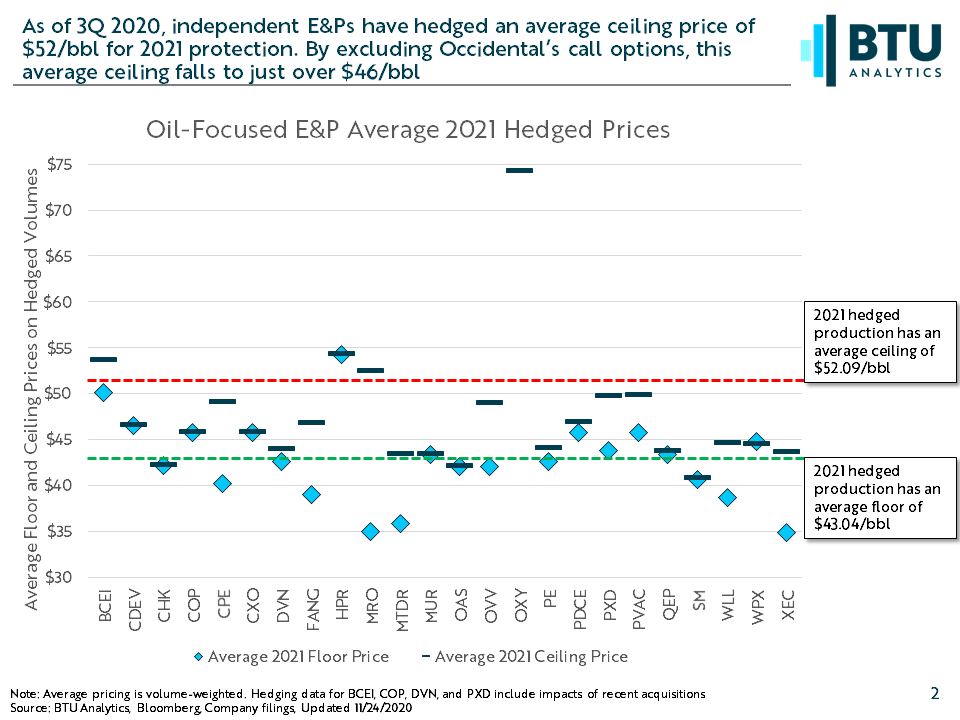The 2020 oil market has been volatile to say the least. When the initial impacts of the COVID-19 pandemic began rolling through global markets, producers with the most robust hedge books found themselves better positioned to withstand the low price environment. An analysis of hedging disclosures in 3Q 2020 filings shows that producers have downside price protection for about the same proportion of oil production in 2021 as in previous years. However, what has changed is how producers may benefit from a rapid rise in oil prices. BTU Analytics has published a detailed dataset of E&P hedging, available now for Upstream Outlook clients.
As of 3Q 2020, a group of 29 publicly traded, independent E&Ps have about 27% of expected oil production hedged in 2021, compared to about 26% of 2020 oil production hedged as of 3Q19. This is illustrated in the chart below, which shows how individual companies have hedged oil production for the upcoming year. A few operators, like Callon, Devon, Diamondback, and Pioneer, have drastically increased the percentage of expected production that has downside price protection than they had a year ago. Some of this is driven by recent acquisitions (Devon and Pioneer hedges were adjusted to include hedges of recently acquired companies), but several others may be increasing their risk management in 2021. Occidental, on the other hand, added significant hedges this year after the closing of its Anadarko acquisition, but has yet to report any downside protections on 2021 oil production.

However, while this data does not highlight a dramatic shift in how much oil production has been hedged for 2021 so far, a deeper dive shows how some producers may miss out on any potential upswing in oil prices next year. In order to lock in downside protection, producers will typically sacrifice some upside to lower the cost of limiting downside risk. They may even give up some upside on additional barrels (that do not have downside protection) to further lower the overall cost of the hedging program. This is done by selling call options. The chart below shows the average floor and ceiling prices that each E&P has hedged on 2021 oil production.

For the sampled producers above, the average ceiling price on 2021 hedged oil volumes is $52/bbl. However, Occidental’s call options, which it sold in order to further bolster 2020 hedges, significantly increase this average. Excluding Occidental, oil-focused E&Ps show an average ceiling of just $46.15/bbl. This means that producers may sacrifice significant upside if oil prices rally in 2021, given that WTI prices are currently trading just shy of $45/bbl. For example, SM Energy has around 70% of its expected 2021 oil production hedged. While this protects the company from a significant decline in oil prices, SM also misses out on WTI prices above $40.74/bbl on a majority of its 2021 volumes.
While the pandemic-driven lows in front-month oil pricing may be in the rear-view mirror, the impacts may live into 2021 as E&P companies realize lower pricing based on hedges entered into while strip pricing was depressed. However, this limited upside could be partially alleviated by the time 4Q 2020 filings are released, given that 2021 strip pricing has risen by an average $7/bbl over the last month. To see how BTU Analytics models a recovery in oil and gas activity across North America, or to inquire about the hedging data used in this analysis, request a copy of the Upstream Outlook today.









